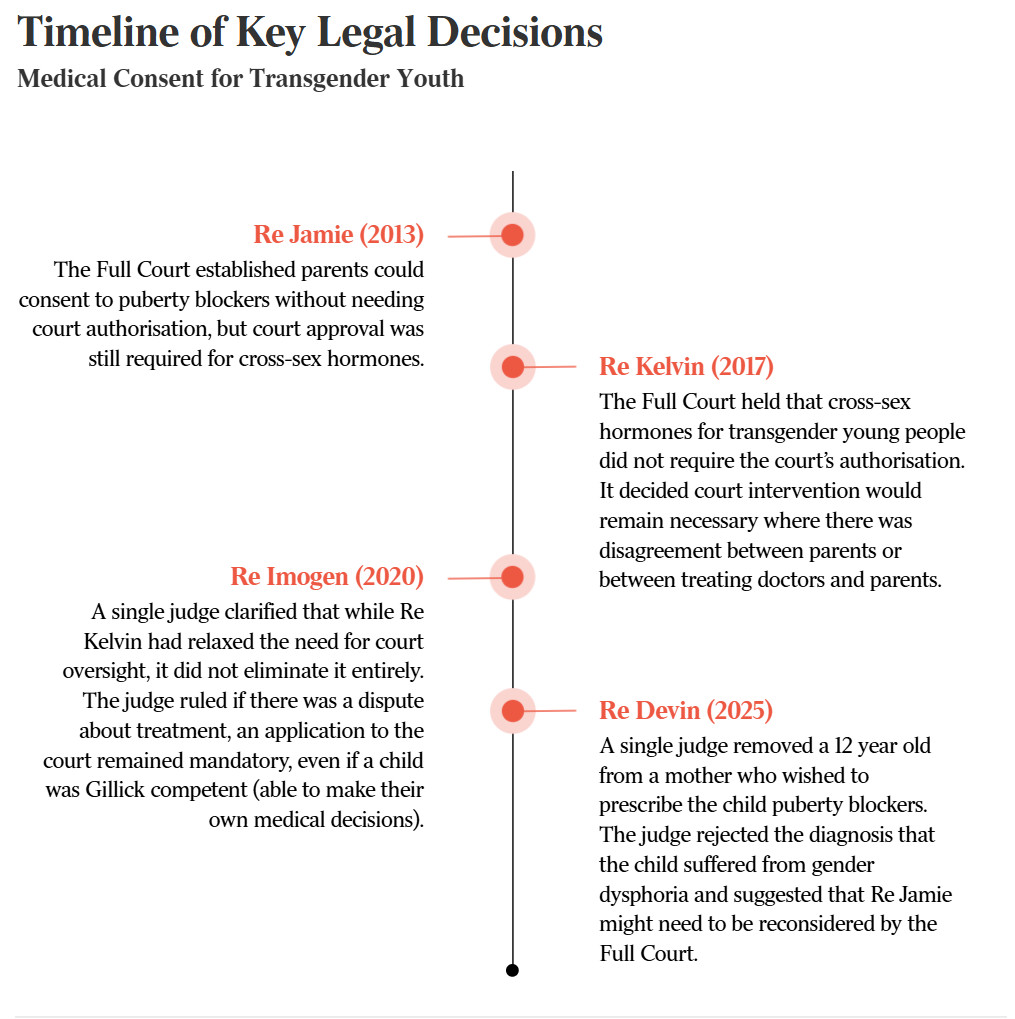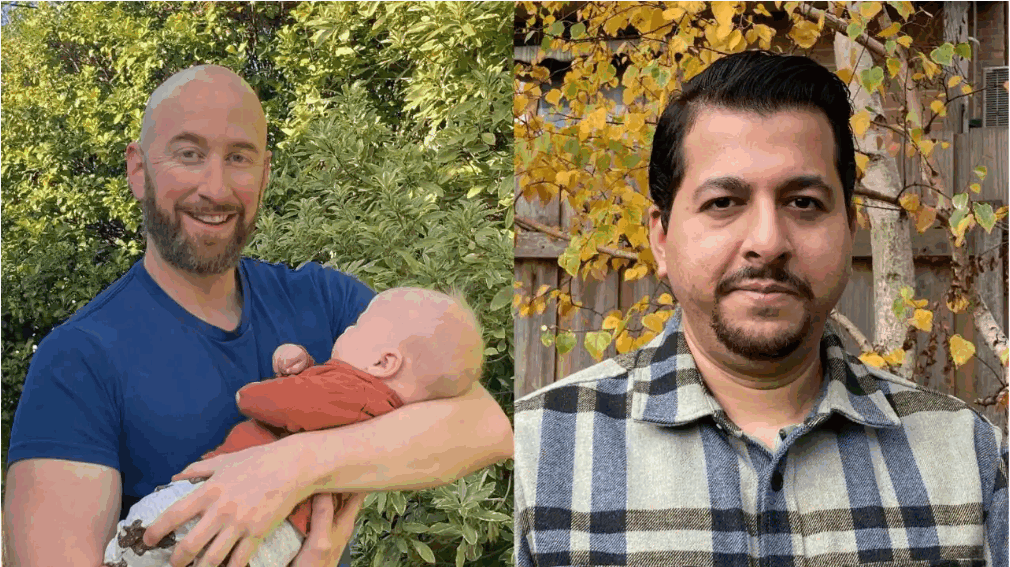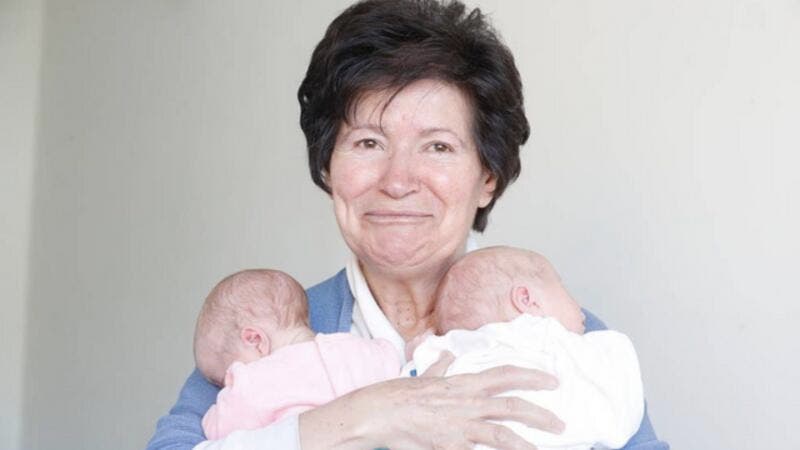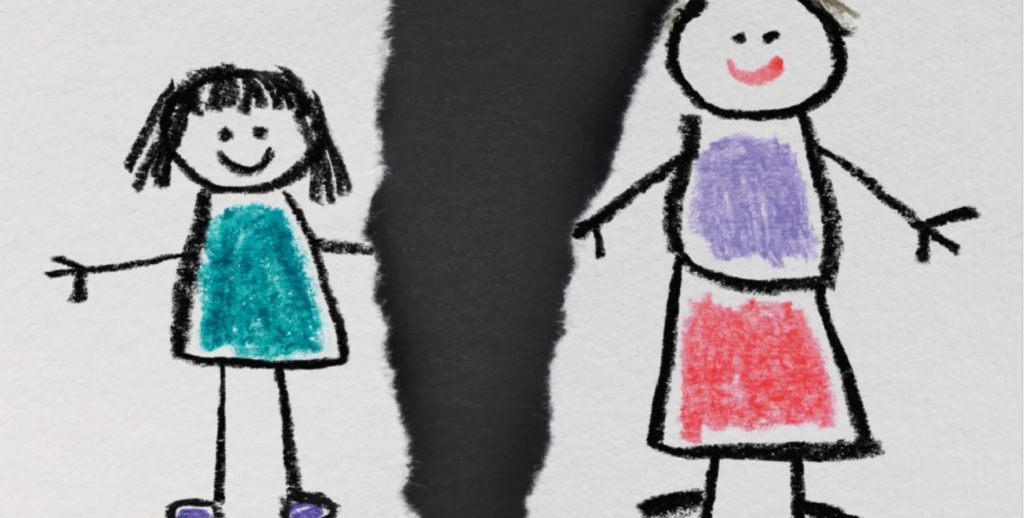“I wanted them to be secure and have a good life, so I gave them everything I could,” says Maggie. “It was silly of me because it has left me in a very parlous financial situation. When I think about it, I realise I perhaps over-compensated for a pretty awful life we had in the early days. Maybe I thought by giving them this money, helping them out, I was saying sorry in the only way I knew how. I’ve broached the subject quietly with her over the years, told her I was sorry for my past sins, but we never went deeper than that. It’s my deepest regret.”
Unfortunately, Ellie and Ben put the second, larger sum of money towards the purchase of a bigger family home at the beginning of 2018, leaving her, as the tenant of Ellie’s original unit, to pay the mortgage on it. When Maggie wrote to them recently asking for a rent reduction, it was Ben who sent back a curt response: “My son-in-law said, ‘We’ll have to start thinking about selling the unit then.’ That’s when I decided to talk to a Senior Rights service. I’m now living with the threat of homelessness!”
Mother’s Day 2018 marked a miserable watershed. “Where in previous years there’d always been a cake, flowers and a card thanking me for always being a mum and a dad, suddenly there was nothing.” Since then, two Christmases and birthdays have also passed unmarked.
In July last year, she was surprised to receive an invitation to her grandson’s fourth birthday and, for a few hours, she felt happy again: “I can’t tell you how close he and I were,” she says. “I used to mind him two-and-a-half days a week when Ellie went back to work. We’d get all the pots and pans out and all the wooden spoons and we’d play music and sing. And we’d read his favourite book, Peepo! : ‘Here’s a little baby, one, two, three …’ These are my most precious and heart-breaking memories.” She pauses. “I wonder if he asks about me.”
Later, there were a couple of short, tense lunch dates with Ellie and the children at a local cafe. And then nothing. Every overture Maggie has made since has been met with the same rebuff: the family’s too busy to meet. “In early March, with all the COVID-19 stuff going on, I sent her a text via Messenger saying, ‘I’m thinking of you and hoping you’re all safe and well.’ I could see that she read it, but she never responded. They’ve never once reached out to see if I’m okay. That feels like a heavy thing in these times.”
Parent-adult child estrangement, characterised by a sustained physical or emotional distance, or both, is on the rise. Still a relatively young field of research, statistics aren’t easy to come by, but more and more therapists working in English-speaking countries report witnessing a new “silent epidemic” of inter-generational family dysfunction invading their waiting rooms.
Five years ago, a study of 561 later-life families in Massachusetts in the US conducted by Megan Gilligan, a sociologist at Iowa State University, found that one in 10 mothers reported being estranged from at least one of their children. Becca Bland, chief executive of Stand Alone, a British organisation that supports and advocates for people affected by family estrangement, suggests that the topic is currently getting more attention because of Meghan Markle, the Duchess of Sussex, who is alienated not only from most of her own family, but her royal in-laws, too. Writing in Grazia last year as the world’s press gorged on the cadaver of Markle’s once-close relationship with her father, Thomas, Bland says: “For many thousands of us … the turmoil that Meghan faces isn’t unfamiliar. It is the everyday reality of our own families, amplified and publicised.”
Bland walked away from her own parents 12 years ago and felt so much shame about doing so that for ages she told people, including boyfriends, that her mum and dad had moved from the UK to Australia to explain their absence from her life.
“Being in touch with all these other people who are going through the exact same thing, well, it’s saved my sanity.”
Dr Kylie Agllias is Australia’s leading researcher in parent-adult child estrangement, a rupture that’s often hidden because of the high social expectations around parenting and family harmony. “Mothers, in particular, can feel that they’ve failed in their most important role if their child is no longer speaking to them,” says Agllias, a social worker and conjoint lecturer at the University of Newcastle.
“They often experience real judgment from their extended family and friends and perceive a broader judgment from a society that tells them that blood is thicker than water. There’s an assumption that they could repair the relationship if they just ‘tried a bit harder’. This is a loss that’s simply not recognised by society and, consequently, there are no rituals to mourn it.” In other words, when your child dies, everyone feels sympathy for you; when your child stops talking to you, everyone asks you what you did wrong.
Estranged fathers feel the pain just as keenly as mothers do, says Agllias, but experience less stigma and shame for the simple reason that men tend not to be asked about their children and grandchildren as often as women are; their grief is less exposed.
When an adult child estranges his or her parent (their average age, says Agllias, is 31), a single incident is rarely to blame. Rather, it follows a long period of emotional disconnection created by the slow accretion, year after year, of repeated hurts and grievances. It can take just one catalysing event to force a wellspring of previously suppressed anger to the surface – and the damage caused by the eruption can reverberate down families for generations.
“There’s often a ‘straw that broke the camel’s back’ moment,” agrees Agllias. “Parents can get stuck in the minor event that they perceive as causing the estrangement rather than the general deterioration of the relationship leading up to it.” This explains why they often have no clear understanding of what it is they’ve done wrong.
“There’s an assumption that they could repair the relationship if they just ‘tried a bit harder’. This is a loss that’s simply not recognised by society and, consequently, there are no rituals to mourn it.”
The differing perspectives are shown in twin studies published by Agllias in 2014 and 2015 in which she interviewed two unrelated groups: one of 25 mature-age estrangees and the other of 26 estranging adult children. Listing the reasons for their relationship breakdown, the children cite abuse – physical, sexual or emotional – poor parenting and betrayal. However, parents attributed their alienation to a choice their child had made between them and something or someone else; disparate values (perhaps relating to sexuality or gender identity); punishment for a perceived wrongdoing; and divorce.
Agllias’s participants also describe the awful emotional stamina that being estranged requires. At the same time as they feel physically cast out or pushed away by their child, they also feel emotionally drawn or pulled towards them, an exhausting seesaw that threatens their sanity. For some, the experience is cyclical: they hear nothing for months on end and then receive a phone call out of the blue, often asking for financial help. When the child goes to ground again, as often happens, the grieving begins again.
Carolyn*, 58, from Adelaide, says her daughter Rachel* chose her partner over her family. At first she was happy when Rachel introduced her new boyfriend to her parents and three siblings. He was a bit “rough around the edges”, Rachel told them, but she liked that about him.
“And he was,” says Carolyn. “You could tell he’d come from a family of hard knocks, which is no reason to dislike somebody. But over a few months, I could see he wasn’t right for her. He was tetchy, and could get angry very quickly.”
She worried for Rachel, then 30, who’d struggled with mental illness for much of her life. “As a teenager, she was anxious, didn’t like going into shops on her own,” says Carolyn. “I tried to get her to see someone, but she’s always been so suspicious of doctors. And she hated the psychiatrist I took her to see. She hides from the world, really. Our relationship could be fraught, but we always worked things out. As soon as this man came on the scene, though, she started to pull away from us, too.”
Her partner’s temper, often ignited by alcohol, became even more apparent when their son, Harry*, was born in December 2014. There were frightening episodes – like the night he came home drunk and drove into the back of Rachel’s car before catching her in a stranglehold and punching her. She was holding the baby at the time and he banged his head in the fracas. Rachel took out a protection order, banning her partner from entering the house they shared but, within weeks, was showing signs of relenting.
Shortly after Harry’s third birthday, Carolyn wrote a letter to Rachel, which she gave to her when she came to pick up the toddler from her mum’s house one afternoon. “I told her I was concerned,” says Carolyn quietly, her pale face illuminating my computer screen. “I told her Harry didn’t want to go back home to a dark house where the curtains were drawn all the time. He liked it here. I told her I wanted her to talk to someone about what was going on with her and Harry’s dad. It couldn’t go on. I told her she was loved very much, that I’d help her in whatever way I could and that if she didn’t want me to help her, I’d find someone else she could trust.”
One week later, Carolyn and her husband, Terry* (Rachel’s stepfather), received a letter from Rachel which they believed someone else helped her write, “because it didn’t sound like her”. In it, she told Carolyn to mind her own business – it was her life and she’d live it the way she saw fit. Carolyn was Harry’s grandmother, not his mother. She was having trouble disciplining him and it was her – Carolyn’s – fault. Later, in court documents, Rachel would accuse Carolyn of being a narcissist. It would be two-and-a-half years before Carolyn and Terry saw their daughter or their grandson again. By that stage, the man Rachel had chosen over her family would be in prison.
There have been many moments when Carolyn wondered whether she should ever have written that letter. But then she remembers a promise she made to a newborn baby. “I told Harry that I would always look out for him,” she says, delicately blowing her nose as her eyes fill with tears. “I made that promise because I think I knew that, at some point, it was all going to go pear-shaped.”
Carolyn says the estrangement feels like a living bereavement. “It does you in. And you can’t talk about something like this. People say, ‘You must be a bad mother; what did you do?’ And to be honest, you feel so fragile that you can’t deal with having to manage all that judgment against you. You’re already enough on the edge as it is.”
Little has been written about the way a child with a mental illness may increase the risk of estrangement, according to Dr Joshua Coleman, a California-based psychologist and author of Rules of Estrangement. “It creates many opportunities for mistakes and misunderstandings. Parents whose children are both estranged and suffer from mental illness live within layers upon layers of sadness, guilt, regret and grief.” He contends, though, that the breakdown of this family bond reflects a broader sweeping social change that has been under way for decades.
If the extended, multi-generational network that supported the family was the typical Western model during the 19th century, the smaller, more autonomous nuclear unit had become the embodiment of home-front harmony by the mid-20th. This new-found self-reliance brought with it a disengagement from institutions such as church, neighbourhood and community that had governed family practices for centuries and, in the vacuum, there arose a persistent focus on the individual’s needs and wants. With marriage no longer resembling a contractual obligation, the bonds grew more fragile and cracks started to appear in the foundations of the nuclear family.
“Now it’s the parent who seeks approval from the child – in large part because the relationship is likely to be the most enduring one the parent will have over the course of his or her lifetime.”
What followed were high divorce rates and the overturning of a basic tenet. “It used to be the child’s job to earn the parent’s respect,” Coleman says. “Now it’s the parent who seeks approval from the child – in large part because the relationship is likely to be the most enduring one the parent will have over the course of his or her lifetime. But nothing binds the parent to the child beyond the child wanting there to be a relationship. If that relationship, which now more closely resembles a friendship than a formal bond, ceases to feel good, it’s at a significantly higher risk of rupture.”
As a society, we’ve made the extended family extinct, yet still crave the connection it afforded. We search for it in a more finite source of emotional availability: our children. But that entitlement we feel to their availability is onerous to a generation that has grown up without a sense of familial responsibility.
If Millennials are, as some commentators suggest, the “therapy generation”, psychotherapy, warns Coleman, can actually widen inter-generational distance. Prior to the 1960s, he says, the aim of therapy was to encourage people to conform to the dictates of the time. Today, family members are often viewed as “facilitators of, or obstacles to, a fully realised life rather than necessary and forgivable features in an expectably imperfect existence”.
Complicating matters further is the fact that parents and adult kids aren’t speaking the same emotional language. When a parent says, “I don’t understand what I’ve done wrong”, it’s not because the child hasn’t told them, he goes on to explain: it’s because what they’ve been told doesn’t make sense to them in terms of how they think about the issues at stake. There’s a generational divide when it comes to interpreting what defines traumatising, abusive or neglectful behaviour. “A lot of my work is about teaching the parent to speak the same language as the adult child,” says Coleman, “because it’s typically the parent who seeks me out.”
Nick Haslam, a professor of psychology at the University of Melbourne, agrees. Thanks to something he calls “concept creep”, a disciplinary spanking meted out by a frazzled dad in 1985 may be rebranded as a traumatising memory of physical abuse by his “woke”, therapy-going offspring who has his psychologist on speed dial. Concept creep, writes Haslam, “encapsulates our modern-day appetite for an ever-increasing sensitivity to harm”. The definition of trauma is broader and more subjective than ever before, it seems, and our default emotional atmosphere is indignation, fury, resentment. This has raised the question of whether Millennials lack the resilience of earlier generations, their sensitivity encapsulated in the rise of the derogatory term “snowflake”, which made an early appearance in Chuck Palahniuk’s Fight Club.
In recent times, Barack Obama has declared empathy to be one of modern society’s most worrying deficits. Anne, a Queensland wife and estranged mother, agrees. Talking about her sadness to ABC Radio Brisbane in 2018, she said: “We walk away from problems too easily. Perhaps we all need to learn to communicate better: count to 10 and have more empathy and understanding for each other.” But empathy, as many adult children who’ve learnt to live with a visceral sense of loss know, is a two-way street. For them, the decision to move into an uncertain space beyond their parents’ influence is rarely made in the heat of an adolescent meltdown: it’s a desperate, scrabbling act of emotional survival.
“We walk away from problems too easily. Perhaps we all need to learn to communicate better: count to 10 and have more empathy and understanding for each other.”
In an interview with BBC Radio 4, Stand Alone’s Becca Bland, an only child, described the hurt and confusion she felt growing up with the knowledge that she had been an unwanted baby. “I was very much an accident,” said Bland, recalling her mother’s emotional distance. “My grandma, who was incredible, did a lot of the parenting.” When Bland, as a young adult, wrote a letter to her mother seeking a new direction for their relationship – “I’m the kind of person who articulates problems in the hope of solving them” – her mother made it clear that she had no interest in pursuing any kind of self-examination. Bland’s conflict-avoidant father was only too happy to fall in line with his wife. Bland sent an email to her parents every month for three years before finally abandoning any hope of reconciliation. “Now I can put my needs first rather than trying to fix things beyond my control. But, yes, I’m angry I didn’t get the mother I wanted.”
In an essay for the Arianna Huffington e-zine Thrive Global, published last year, Harriet Brown, the American author of Shadow Daughter: A Memoir of Estrangement, writes movingly of her decision to leave her parents’ house when she was a teenager and the judgment from aunts and uncles that followed. She was reminded that “you only get one mother” and “you’ll be sorry when she dies”. But Brown wondered, “Would I? … What I wanted to say was, ‘I’m sorry she’s so critical and mean. I’m sorry I spent so long feeling like a terrible person because she told me I was. I’m sorry I didn’t have a different mother.’ I wanted to say, ‘Her death won’t change a thing.’ ” Happily for Brown, history has not repeated itself: she enjoys a close, loving relationship with her two college-age daughters.
Estranged parents who are also grandparents carry a double burden. Not only are they deprived of the presence of their own child in their lives, but also their grandchildren. Rebecca*, from Orange in NSW, is 56, blonde and tanned with an open face and a ready smile. Her cheerfulness masks the horror of five years spent in family dispute resolution and federal court, trying to secure visitation rights to her two grandsons, who are six and five. Like them, she is a casualty of her adult son Oliver’s separation from his partner Chloe.
Oliver* and Chloe* were young when they met – she wasn’t yet 20 – but they quickly started a family. Rebecca’s first grandson was one year old and Chloe heavily pregnant with her second baby when Oliver confided in his mother that, after two years of trying, he couldn’t put up with his girlfriend’s controlling ways any longer. Not only had she forbidden him to remain in touch with any of his female friends on Facebook, she had banned him seeing or speaking to his parents and two younger siblings. And so Oliver would call Rebecca on his way to and from work, later deleting all evidence from his phone.
When the couple eventually separated, mediation proved pointless. Chloe refused Oliver’s request for supervised access to his two small sons and, in turn, launched a barrage of allegations about him that later court proceedings would show to be false. Chloe’s psychiatric evaluation suggested Cluster A and B personality disorders with narcissistic tendencies. “She had estranged her own parents when we first met her,” Rebecca tells me, “and I was worried about that at the time. She invited them back on the scene when she was pregnant with our first grandson, though, and that’s when she cut us off.”
Oliver and Rebecca have separately fought for and been granted visitation rights to the children. For a while, the arrangement appeared to be working but the minute the prospect of the children staying overnight, either with their father or paternal grandparents, arises, Chloe fails to keep her appointment to hand them over. “We’re meant to have them every second weekend,” says Rebecca, “but she won’t turn up. We haven’t seen them in almost a year now. It’s devastating. The hardest thing is when I see pictures of my sister taking her granddaughter shopping. I want to be able to do that, too. And we’re obviously very concerned about their welfare.”
Another court appearance is scheduled in a month. “It’s draining, emotionally and financially,” says Rebecca. So far, mother and son have spent $175,000. “You do what you have to do,” she says. “We were lucky to have some assets that we could start selling off.” She mentions a 1962 Mercedes-Benz Fintail – her husband’s pride and joy – and “a couple of horses and some cattle” from their farm. But there’s still no end in sight to the struggle.
“I’d love to be able to see the grandchildren and not have any issues with their mum or her parents but whether that will come to pass, I don’t know,” says Rebecca. “I try to remain positive. Maybe when the boys are older, we’ll be able to reconnect.”
Sandra Kelly is a consultant solicitor with Caboolture Law in Queensland, a battle-weary gladiator in the bloody arena of family law. “Family law proceedings aren’t for the faint of heart,” she warns. “You need to put your big-girl shoes on and have very deep pockets. Because of the rise in drug and alcohol abuse, I’m seeing more and more grandparents applying to the federal court circuit, whether it’s for a ‘spend time with’ order or a ‘live with’ order.”
Still, going to court should always be a last resort, she says. “It’s aggressive and expensive. I’ve had matters that have gone to $90,000 to $100,000 in fees over five years. People have to re-mortgage their homes. And it’s terrible for family relationships.”
All troubled families headed for litigation are obliged to try dispute resolution first. Kelly recommends engaging a private family dispute practitioner, preferably one who’s a lawyer or a barrister, since they’re expert in bringing all parties, even reluctant ones, to the table. In an ideal scenario, agreement will be brokered at this stage and the matter will go no further. But of course, all too often, it’s simply not enough.
At the beginning of this year, the Department of Child Protection found that there was significant risk of harm to Carolyn’s grandson Harry if he remained alone in his mother’s care. “They asked me if I would take him and I said yes,” says Carolyn. “They went and picked him up and brought him straight here. They knew he had a bedroom here and could walk straight in and be with family.” She adds sadly, “It was an awful day.”
With the court case she was pursuing to gain access to Harry now halted (Carolyn has already spent $10,000 of her super), authorities are looking at the possibility of Carolyn and Rachel being able to share Harry’s care under a reunification plan. Even though she hasn’t seen Rachel outside of a courtroom in nearly three years, Carolyn wants to give her daughter the opportunity to be there for her son – with all the necessary support in place that would take.
Meanwhile, she and Terry have become full-time carers to an energetic five-year-old. “We’re tired, but we love him very dearly and he enriches our life,” says Carolyn. “We’ll parent him for as long as we’re needed.” She likes to look at two photographs of Harry taken just months apart that show just how far he’s come this year. In the first, he’s hesitant and waif-like with dark circles under his eyes and looks uncertainly into the camera. In the second, he’s smiling with a confident gaze, his complexion rosy. “They say he’s ‘globally delayed’, ” says Carolyn, “which is a fancy way of saying he’s behind for his age but he’s already started to catch up. He’s bright and I’m not saying that because I’m his grandma.”
Three years ago, Rebecca in Orange in NSW opened a contact centre, a neutral space where parents who are navigating a difficult separation and don’t live with their children can spend safe, supervised time with them. Her company is currently helping about 30 families, six of them grandparents who are wanting to see their grandchildren. “I’ve had nights where I’ve cried myself to sleep but running this, being part of a solution, really helps,” she says. “Without us, a lot of our clients wouldn’t be able to see their children or grandchildren before going to trial, which could be a three-or four-year wait.”
And what of other parents foundering in the exhausting push-and-pull tides of estrangement, never quite able to attain closure while the possibility of reconciliation exists? How do they find their lifeline? Californian psychologist Joshua Coleman, who’s frank about the process he used to reconnect with his own estranged adult daughter after he remarried following a divorce from her mother, suggests emailing a “letter of amends” to the lost child. “The goal is to not create defensiveness,” he says. “As soon as you do that, the game’s over. Instead, find the kernel of truth in their accusation – and acknowledge it. Try not to explain. Don’t blame. Empathise.”
“The goal is to not create defensiveness. As soon as you do that, the game’s over. Instead, find the kernel of truth in their accusation – and acknowledge it. Try not to explain. Don’t blame. Empathise.”
Wait for six weeks, he says. If nothing comes back, send a follow up. Don’t assume that the door is closed forever – or, at least, not until a legal communication removes all doubt or your own sense of self-preservation tells you to bow out.
But what if you feel so hurt you just can’t stomach eating humble pie? “Get your anger handled before you reach out to your son or daughter,” he urges. “Call a friend. Write a furious letter to your child – and then burn it. Work out. Meditate. Just don’t get into it with them.” Remember that the adult child will always have more power to set the terms of the relationship because they’re more willing to walk away, he says.
Meanwhile, Maggie in Sydney continues to torment herself about a missed opportunity to make peace with her daughter Ellie. “She and I were in the car after my grandson’s birthday party last winter. She was driving me to the railway station for me to catch a train home when she said, ‘I know I was a difficult child, Mum.’
“Looking back, I realise I didn’t take the opportunity to say, ‘Well, I was a pretty difficult parent, too, at times.’ Now it’s gone. I dream about being back in my grandchildren’s lives, but I don’t see it happening. I just don’t know if I have it in me to ever trust her again.”




